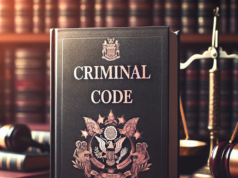
The majority of states define manslaughter through a classification system which divides the charge based on circumstance. Manslaughter degrees coincide with the act of manslaughter, which is a homicidal action committed without justification or reason but is distinguishable from murder through the absence of a premeditated plan and the element of malice afterthought.
The criminal statutes of various states typically divide manslaughter based on degrees, with the most common separation arising between voluntary and involuntary manslaughter.
Provocations for voluntary manslaughter degrees include a violent assault or an unlawful attempt to arrest an individual. Voluntary manslaughter is considered a first-degree offense of the act. The murderous action is a result of an intentional act accomplished without malice, but instead through sudden provocation.
Involuntary manslaughter degrees result from a failure to act in a sociably acceptable way to safeguard human life. These types of manslaughter degrees also constitute a lawful act which is committed in a reckless manner to precipitate an individual’s death. Automobile accidents that result from reckless and careless driving are typically responsible for the majority of manslaughter charges. That being said, most states classify these suits as vehicular manslaughter. The specifics associated with manslaughter degrees vary from State to State through the interpretation of a negligent action.






























